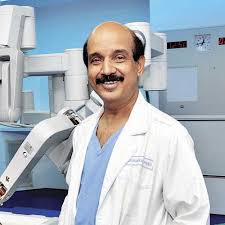 First time in the world new arterial technique gives fresh lease of life to inoperable patient with 17 blocks.
First time in the world new arterial technique gives fresh lease of life to inoperable patient with 17 blocks.
In a revolutionary surgery conducted by Prime Minister Manmohan Singh’s heart surgeon Dr. Ramakant Panda, a 58-year-old patient got a new lease of life from a fatal heart condition after 12 separate bypass grafts were created for blood to flow smoothly from and into the heart.
Dr. Panda, who had earlier operated a patient with record breaking 10 grafts, has broken his own record by successfully operating this high risk case.
The 11 hour long procedure that was conducted at Mumbai’s Asian Heart Institute on February 12, 2014 could be the first such surgery in the world where so many grafts were created to bypass clogged arteries.
Mithalal Dhoka has been suffering from diabetes and hypertension for more than two decades. In early February he developed chest pain and breathing difficulty for which he was initially admitted to Krishna Institute of Medical sciences, Hyderabad where a coronary angiogram was done on 10th February.
The angiogram showed severe multiple blockages ( 17 blockages ) in all 3 major arteries of heart. All the arteries were very small (1 mm in diameter ). In view of very small arteries (less than 1 mm ), too many blockages and too much cholesterol deposit in the arteries, the patient was considered inoperable.
Dhoka came to Asian Heart Institute in unstable condition. He was taken to operation theatre in a critical condition ( low BP and high lung pressure ) where an intra aortic balloon pump (IABP) was put inside his heart to support his BP and circulation while he was being operated upon. He underwent bypass surgery with bypass grafts to 12 arteries. Since the conventional technique of using mixture of arterial graft and vein graft from leg was not possible to bypass so many blockages to very small arteries, Dr Panda used arterial grafts in a sequential manner to all 12 arteries with blocks. Postoperatively he improved dramatically.
“An CT angiogram done after 20 days of surgery showed all grafts were working well. The patient underwent a stress test which was normal, which showed that while the patient was running an equivalent of 7 kilometer an hour his heart was getting full blood supply. The patient is doing well and is getting ready to get discharged,” said Dr. Panda.
The case is unique and first time in the world for following reason
1. Most patients have 3-4 blocks, this patient had 17 blocks making him almost inoperable.
2. Most patients undergoing bypass surgery in the world get 3-4 bypass grafts to major arteries of the heart. This patient had 12 bypass grafts.
3. The size of heart arteries determines whether bypass surgery is possible, also determines risk of surgery as well as long term results. Most patients have 3 major heart arteries more than 1.5 mm in size. Bypass to any artery less than 1.5 mm in diameter is technically very difficult and risky. Any patient who has only 1 mm size arteries, is almost inoperable and if operated has a very high risk. Instead of having 3 major arteries which is normal, this patient had more than 12 arteries which were all 1mm in diameter.
4. The entire surgery was done on a beating heart technique. Since most of his arteries were 1mm , it was very demanding to do so many bypass grafts to small arteries on beating heart.
5. We did a Google search, the maximum number of bypass surgeries reported are 8. This is the first time in the world so many (12 bypass grafts) are done to bypass a patients. And also first time 12 grafts done on beating heart.
6. The technique used is unique because this patient did not have 3 major arteries as in most patients but 12 smaller arteries and all had blockages. In conventional technique where you do bypass by attaching one end of bypass graft to main pipe of heart ( aorta ) and other end to the coronary artery is not possible because there is no space in aorta to construct so many grafts.
7. Second if one uses the graft from leg (vein) they don’t work in smaller arteries, the graft gets blocked. The only way to keep the grafts open was to use arterial grafts. Unfortunately there are only 4 arterial grafts available ( 2 mammary arteries & 2 radial arteries ) to do bypass. Dr Panda used unique technique of sequential grafting where he attached one bypass graft one after another to 3-4 arteries to bypass all the blockages.
8. Since the arteries were small (1-1.2 mm diameter) dr panda used very thin thread ( 8 ‘0’) , thinner than a human hair to bypass all the grafts.

 >
>